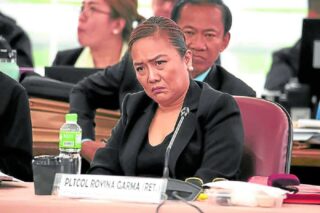Last Thursday, heavy rains fell on Metro Manila—and traffic ground to a standstill, again. For both believers and unbelievers, it was hell on earth, Dan Brown-style. Again. What made it worse, for a good many who expressed their outrage on social media, was the unhelpful attempts at perspective-setting by some well-meaning busybodies; one such comment noted that, at least, the flash floods went as quickly as they came.
We do not know whether this remark was incidentally obtuse or sincerely idiotic. These sudden events are called flash floods for a reason; the more helpful, the more public-spirited, thing to say would have been to mark whether the traffic started to flow again as soon as the floods subsided. Helpful and public-spirited, even though the answer last Thursday would have been a dismissive and sarcastic no.
The matter is important, and we beg the indulgence of our many readers who are not based in the capital area; the issue has implications for the rest of the nation because it is a question of both culture and governance.
To be sure, floods that cripple Metro Manila are not the monopoly of the present administration. Other administrations have been spooked by the same nightmare. Flood control was one of Imelda Marcos’ grandiose experiments, in the 1970s. A monster flood and traffic jam in the 1990s was the subject of a memorable tirade from Sen. Blas Ople.
But this “context” is precisely what makes the problem even more infuriating. We have been at it for decades, and yet the nightmares continue to visit us.
Yes, part of the problem is economic. Congestion in the National Capital Region remains a pressing reality because many people still gravitate to the center of industry, of economic activity. Continuous economic growth since 2001 has also rapidly increased the number of vehicles on the road.
But these are not hidden trends; government planners, among other specialists, have seen them coming. And the devastation wrought by “Ondoy” in 2009 and by the unusual habagat season of 2012 should have prompted public official and private citizen alike to prepare for the worst. And yet, the nightmare happened all over again.
Aside from the nature of the weather disturbance itself and the congestion problem (too many people packed into Metro Manila, too many vehicles plying its streets, too many waterways still clogged and undrained), there were other factors that contributed to last Thursday’s monstrous traffic jam.
There are, for example, any number of ongoing public works projects. About 30 road construction and 40 drainage projects pockmark the streets; many of these were begun only recently—right before the start of the rainy season. We realize that contracts that require public bidding often suffer scheduling snafus: A late award may mean a delayed project start, or a winning contractor may run over schedule. But having too many “open” projects still unfinished at this time of the year (on Makati Avenue in Makati City, for instance, or the rotunda in Mandaluyong City) make flooding or traffic jams all but inevitable.
We see this as a governance issue. But it is also a cultural problem.
Filipinos have been so used to the rather casual way in which contractors handle public works projects that very few object when, say, a road in Quezon City is dug up haphazardly to make way for drainage repair. There are no clear warning signs around the diggings, no detour signs posted, no provisions for disposing of debris made. Is it any wonder that these streets become traffic traps at the slightest hint of rain?


